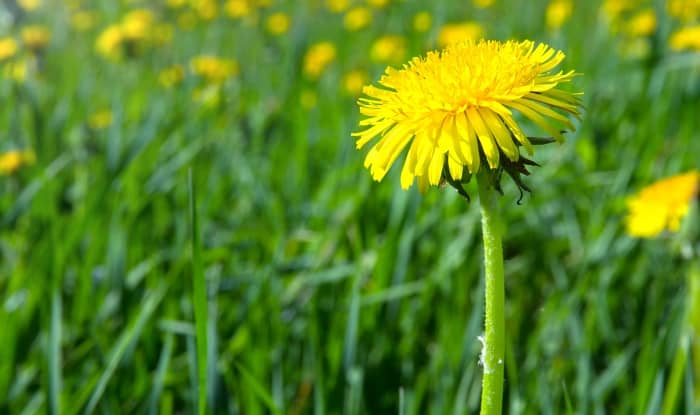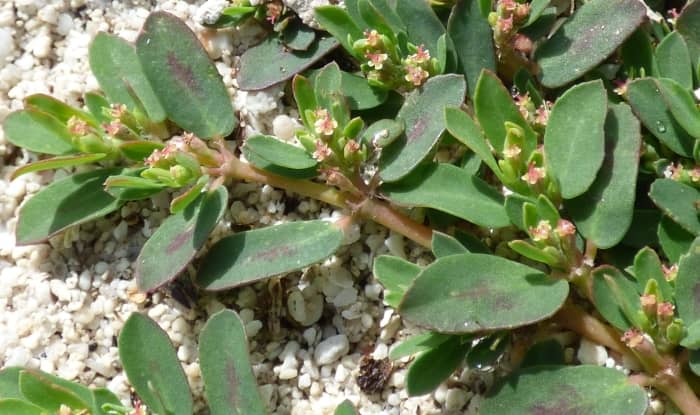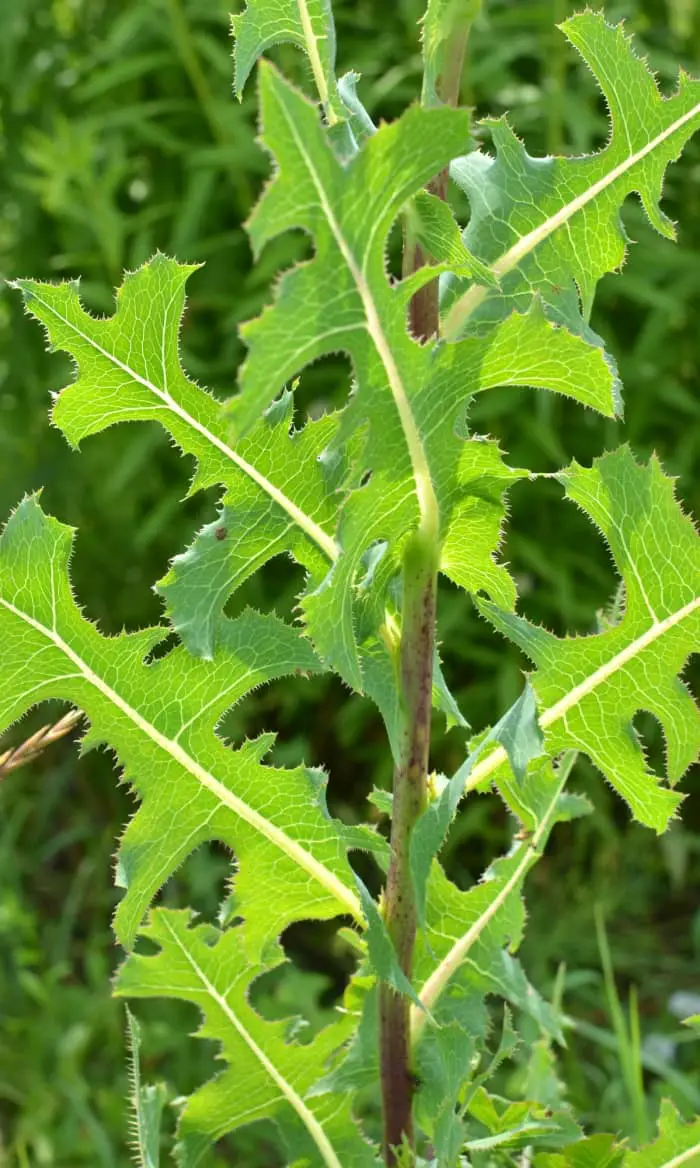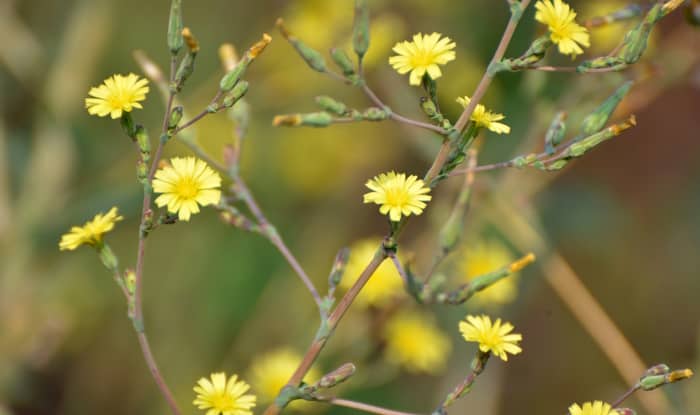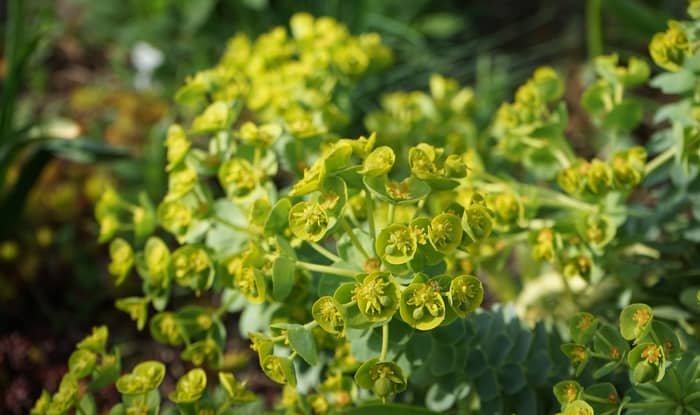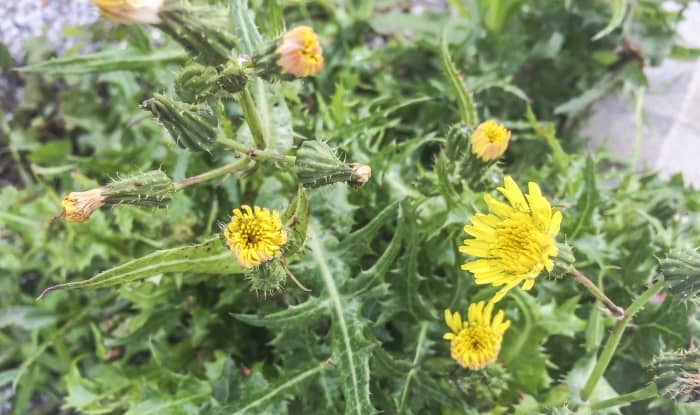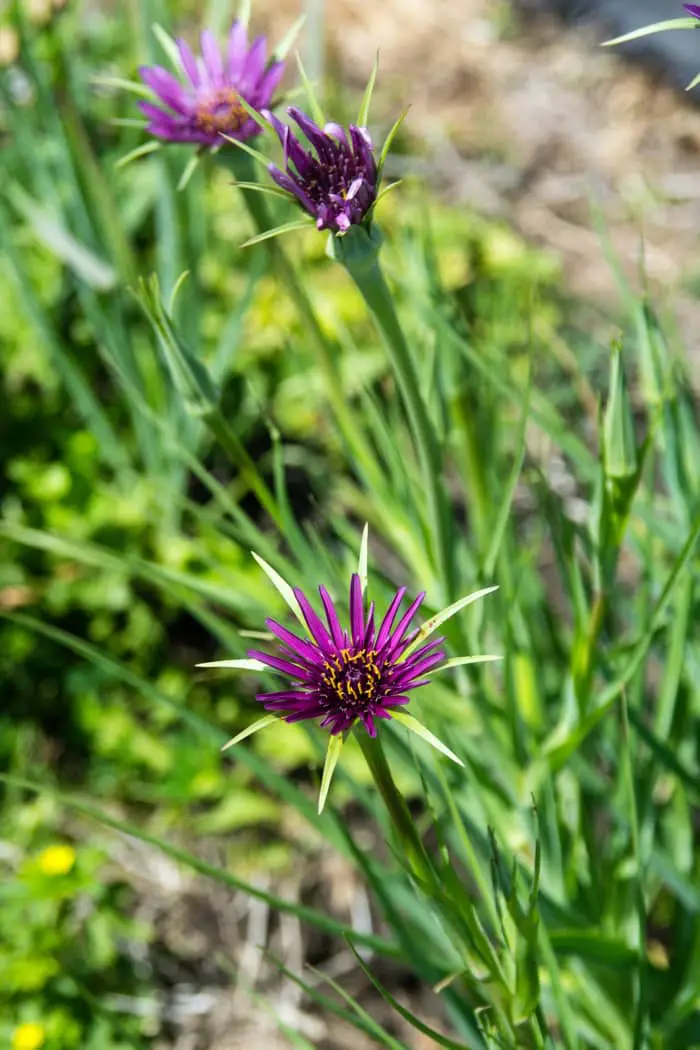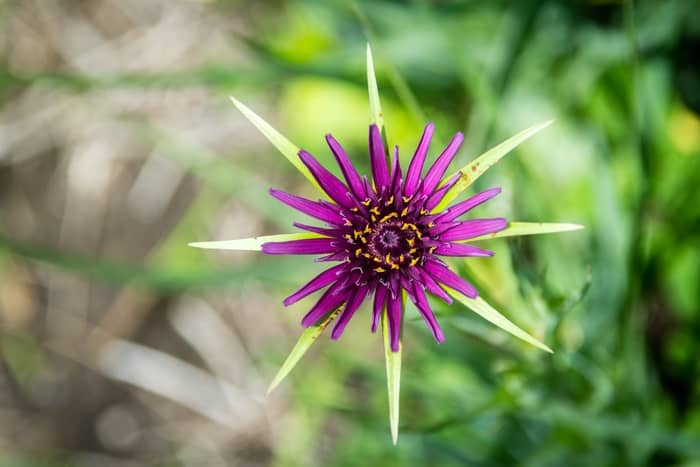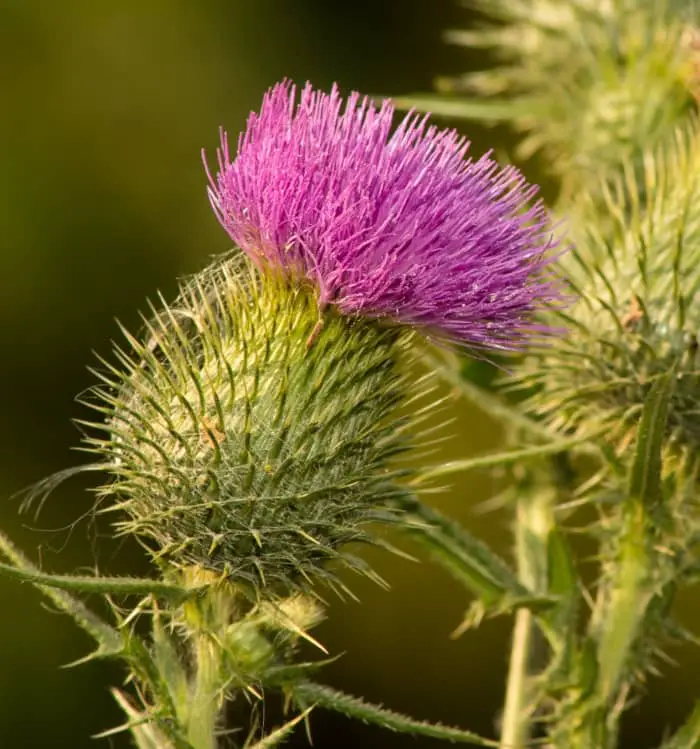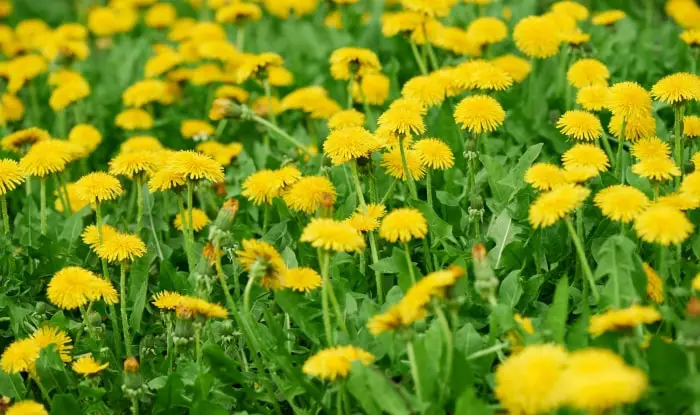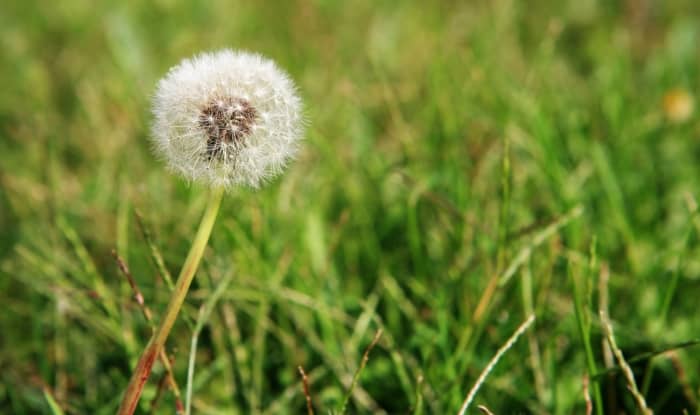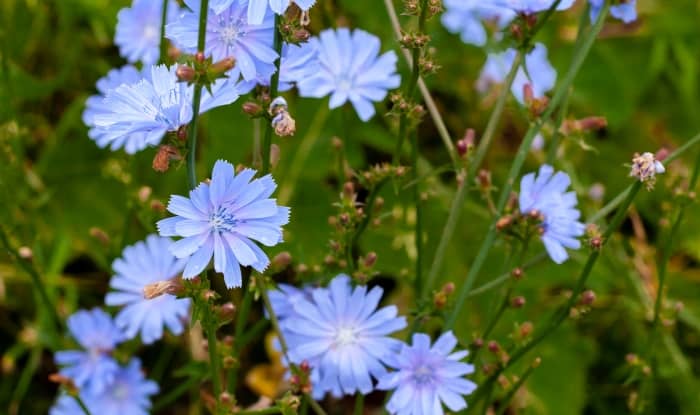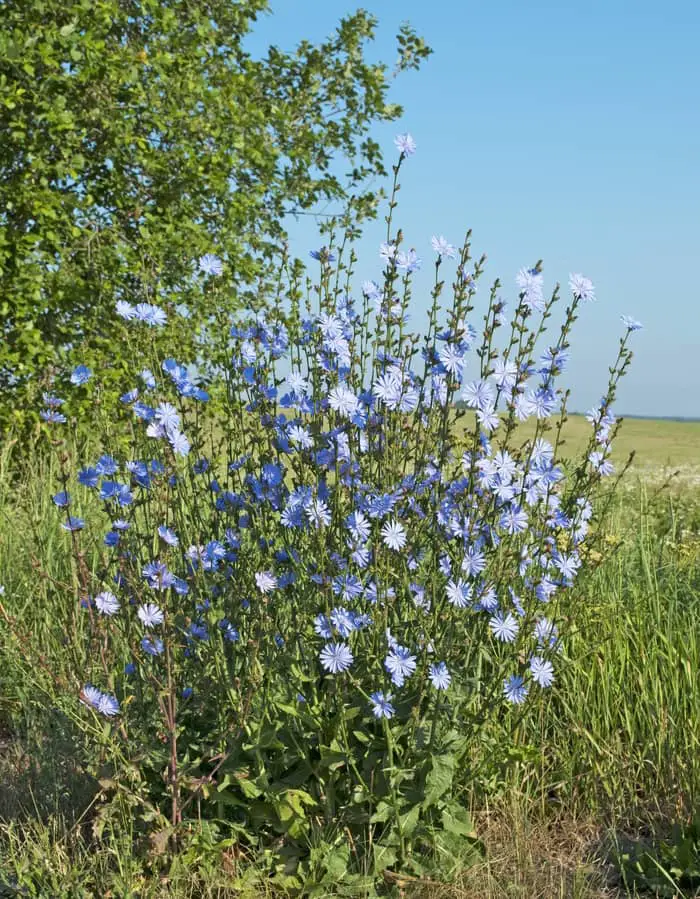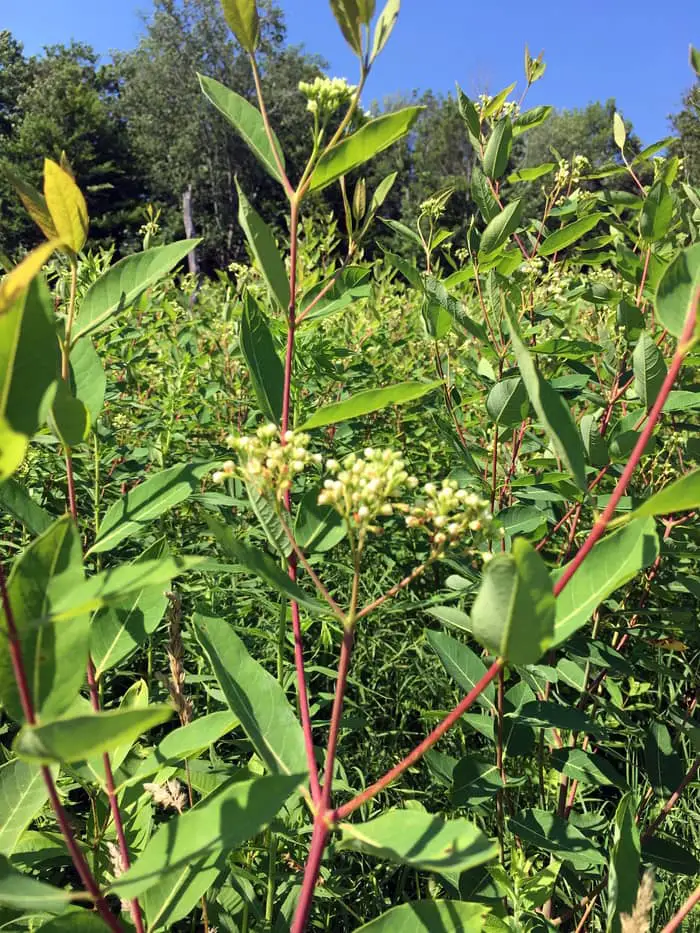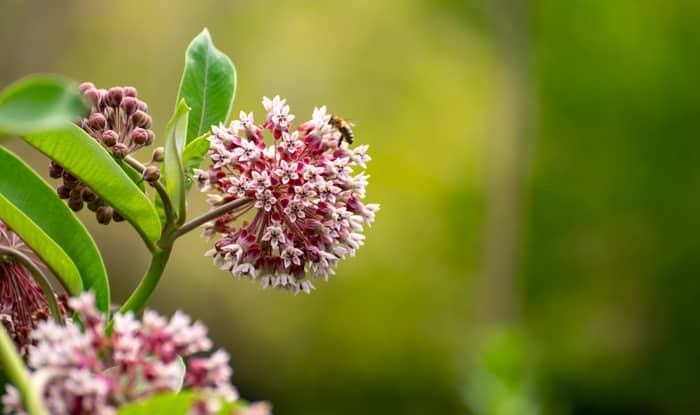Have you found some weeds with milky sap in your garden?
I’ll help you identify the weeds using photos and detailed descriptions. And I’ll give you advice so that you can get rid of them.
Let’s dive in.
Weeds With Milky Sap
Prostrate Spurge (Euphorbia maculata)
Also called spotted spurge and creeping spurge, prostrate spurge is a fast-growing weed with a creeping habit, spreading horizontally close to the ground through branched runners emanating from a central taproot. Euphorbia maculata belongs to the spurge family, Euphorbiaceae.
As this weed thrives, it develops a dense mat of leaves and stems, typically measuring about 1-2 inches in height. The stems of the prostrate spurge contain a poisonous, milky sap that causes skin irritation, making it necessary to take precautions when attempting to remove the weed.
The milky sap is a good way to distinguish spurge from a similar-looking creeping weed, prostrate knotweed.
Prostrate spurge is an annual weed, often infesting poorly maintained lawns, gardens, and cultivated fields. The weed prefers growing in sunny locations with warm soil and struggles in shaded areas.
The weed has small, dark green leaves that grow oppositely, often with a central dark red spot, making it easy to identify. The leaves of the prostrate spurge are generally less than half an inch long, and the stems have a reddish tinge.
During summertime, the weed produces small, white flowers with four petals and a yellow center. These flowers are tiny and often unnoticed. Prostrate spurge spreads by seeds that can stay dormant in the soil for years, germinating when the conditions are right.
Effective control measures for prostrate spurge include hand weeding, pre-emergent herbicides, and broadleaf herbicides.
Wild Lettuce (Lactuca spp)
Wild lettuce is a group of plant species with many variations, but two of the most common types are Lactuca serriola and Lactuca virosa. This herbaceous plant is typically classified as a weed and is native to North Africa, Europe, and Asia, but has since spread to many other parts of the world.
In the early stages of growth, wild lettuce can be mistaken for another common weed, the dandelion plant, as it shares the same rosette-like structure and family. But, in optimal growing conditions, it can grow up to 7-8 feet high when fully mature, with a thick, strong stem sometimes covered with prickly spines. The stem color of different species varies and can be either purple, green, or brownish-red.
The leaves of wild lettuce are long and green, grow in a rosette-like pattern, and can be up to 10 inches long. Deep notches and spines are prominent on the underside of the leaf along the central vein. When the leaves are cut or broken, the plant produces a white milky sap that contains lactucarium, a natural sedative and analgesic substance. Some people use this sap to treat insomnia, anxiety, and pain.
Wild lettuce is considered to be a biennial or annual herb, depending on the species, and it can produce small, yellow flowers in the summer. The flowers are dandelion-like and arranged in clusters at the top of the stem, each growing up to 1 inch wide. The plant is wind-pollinated, and the seeds spread easily in the wind.
Myrtle Spurge (Euphorbia myrsinites)
Myrtle spurge is a low-growing, evergreen succulent, typically growing 6-12 inches tall. The plant is native to Europe but now grows in many parts of the world.
Myrtle spurge has blue-green leaves that are fleshy and arranged alternately on the thick, branching, stem. Small, yellow-green flowers grow in clusters at the end of the 2ft stem. The roots grow deep and extensive, making the weed difficult to remove once established.
Myrtle spurge is an invasive plant in some areas, quickly spreading through self-seeding and vegetative reproduction. The weed tolerates varying conditions but prefers well-drained soil and full sun to partial shade. You’ll often find myrtle spurge in disturbed areas, on rocky slopes, and growing in gardens as an ornamental plant.
To control myrtle spurge, remove the weed before it goes to seed. You can do this by pulling the plant by hand or using a hoe to cut the stem below the soil level.
Remember to wear gloves and protective clothing when handling myrtle spurge, as the plant produces a toxic, milky sap that causes skin irritation (1). You can also use herbicides to control the spread of myrtle spurge, but take care not to damage nearby plants or wildlife.
Spiny Sowthistle (Sonchus asper)
Spiny sowthistle, also known as prickly sowthistle, is a common annual weed in many parts of the world. It’s an easily identifiable weed, thanks to its spiny leaves with prickly margins and its yellow flowers that closely resemble dandelions. The weed looks similar to thistles in its early growth stages, but it’s not a member of the thistle family.
Small, sharp spines cover the leaves and stems, causing skin irritation when handled, so remember to wear gloves. The stems and leaves emit a milky sap when cut.
The flowers bloom from late spring to early fall, producing seeds that quickly spread and take root in new locations.
Spiny sowthistle is typically found in full sun and moist to dry soil, growing in lawns, landscapes, hayfields, pastures, and roadsides.
If left unchecked, spiny sowthistle can become invasive, crowding out native vegetation and reducing plant diversity. To control the weed’s spread, remove the plant before it seeds. You can do this by hand-pulling the weed or using herbicides. But, take care when using herbicides, as they can also harm desirable plants and wildlife.
Common Salsify (Tragopogon porrifolius)
Common salsify, also known as purple goat’s beard, is a biennial herbaceous plant native to Europe and introduced to other parts of the world. It typically grows to a height of 4 feet, with grass-like leaves growing in a rosette at the base of the stem and on the stem.
The weed stem grows straight and branches into smaller stems that bear the purple, starry flower heads. The flowers open up during the day, close at night, and attract pollinators such as bees and butterflies.
Common salsify is commonly called “oyster plant” due to the root’s flavor and texture, similar to cooked oysters. But, the long root can be difficult to harvest as it grows deep in the soil and is prone to breaking.
The stem and the taproot release a milky sap when broken (2).
The weed spreads through the production of seeds carried by the wind and often grows in disturbed areas such as roadsides, fields, and gardens. Common salsify is not typically considered invasive, but the weed quickly takes over if left unchecked.
To prevent common salsify from spreading, you should pull the weeds up by the roots before they produce seeds. You can also use weed killer.
Milk Thistle (Silybum marianum)
Milk thistle is a noxious weed that grows in disturbed areas and pastures, along fence rows, and next to roadsides. This winter annual or biennial weed can grow up to 6 feet tall when fully matured and sports shiny green leaves with milky veins, giving it a distinctive white marbling appearance.
When you break the leaves, they exude a milky sap that gives the weed its name.
One of the most notable characteristics of milk thistle is its spiny leaves and stems. Sharp spines cover the plant’s leaves, and the large prickly bracts that surround the base of the pink-purple flower heads can be uncomfortable to handle. Milk thistle blooms between April and October.
Originally planted as an ornamental plant, milk thistle has become a problematic weed due to its aggressive invasion of suitable habitats. Milk thistle can grow densely, pushing out native plants and beneficial forage, and the nitrates it contains are toxic to grazing animals.
One of the biggest challenges in controlling milk thistle is its prolific seed production. Each plant produces around 6,000 seeds per year. These seeds can remain dormant in the soil for ten years or more, waiting for the right conditions to germinate. To prevent further spread, remove the weed before it sets seed.
Dandelions (Taraxacum spp.)
Dandelions are among the most widespread weeds, found in almost every part of the world on lawns and fields. With more than 250 different species of dandelion, they are known for their eye-catching flowerhead. Most dandelions have yellow flowers, but some feature pink or white blooms.
Dandelions are perennials, and their leaves grow in a basal rosette with long, narrow, and jagged lobes. The leaves can be hairy or smooth and grow up to 12 inches long.
In the spring, dandelions produce a tall stem with a single flowerhead at the end, containing as many as 100 individual florets. The flowerhead gives way to a white puffball of tiny seeds that can disperse in the wind.
When you break a dandelion weed stem, a milky substance oozes out (actually latex).
Dandelions have been used for medicinal properties for centuries, particularly for digestive issues and liver problems, and as a diuretic. They are also a rich source of vitamins A, C, and K and minerals such as calcium, iron, and potassium. The leaves and flowers of dandelions can be eaten raw or cooked in salads, soups, and teas.
Despite their benefits, many consider dandelions a nuisance as they can quickly take over. However, they play a crucial role in the ecosystem, providing food for pollinators and helping to aerate the soil.
You can remove dandelions by digging them out with their taproot or kill them with a systemic herbicide.
Common Chicory (Chicorium intybus)
Common chicory, a familiar sight along roadsides and in abandoned fields, is a hardy perennial weed with distinctive bright blue flowers that bloom from June through fall until the first frost.
The plant typically grows up to 3 feet tall with branched stems. The rigid, hollow weed stems exude a milky sap when cut. Clusters of 1-5 flowers grow along the branches or at the tip. Each flower consists of numerous florets.
During its initial growth stages, common chicory resembles a dandelion, developing a rosette of lanceolate leaves ranging from 3 to 10 inches long. The leaves may be smooth or hairy with deep lobes or irregular tooths at the edges.
You can use chicory in culinary applications, with the leaves making a tasty addition to salads. You can roast the edible root and use it as a coffee substitute or grind it and add it as an ingredient in baked goods and snacks.
Indian hemp (Apocynum cannabinum)
APOCYNUM CANNABINUM BY PAUL ASMAN AND JILL LENOB
Also called Dogbane, Indian hemp is a native North American perennial plant commonly found in damp habitats such as marshes, swamps, and stream banks.
The weed usually grows between 2 to 5 feet tall, although it can reach up to 6 feet. The leaves are long and narrow, measuring about 3 to 6 inches and 0.2 to 0.5 inches wide. They grow in opposite pairs along thin and erect stems and have smooth edges and a slightly glossy surface. The stems are reddish-brown and leak a toxic, milky sap when bruised.
Indian hemp blooms from June to August, with small, greenish-white, bell-shaped flowers growing in clusters at the top of the stem. After the flowers, seed pods develop, splitting when ripe to release the flat, oval-shaped seeds. Tufts of white hair that grow from the seeds enable wind dispersal.
FRITZFLOHRREYNOLDS CC BY-SA 3.0 VIA WIKIMEDIA COMMONS
The weed also spreads by underground runners that grow from a taproot that can reach 6 feet deep.
You can control Indian hemp by pulling or digging the weed up. Make sure the entire root system is removed from the ground because the weed can regrow from small pieces left behind. For larger areas, you can use systemic herbicides.
Milkweed (Asclepias spp.)
COMMON MILKWEED
Milkweed, a perennial plant in the Apocynaceae family, comprises over 100 species widespread throughout North America.
Except for butterfly milkweed, all the plants ooze a milky latex sap when injured, giving them their common name.
Usually, milkweed plants flower from late spring to early summer. Milkweed flowers grow in clusters and can be white, red, purple, pink, green, yellow, or orange. After flowering, fleshy pod-like fruits develop that split to release seeds. The seeds have white, fluffy hairs attached, enabling their dispersal by the wind.
ROSE MILKWEED
Milkweed plants commonly grow in open fields, meadows, prairies, and along roadsides, thriving in a variety of soil types. To control milkweed, you can pull the weeds up by the roots or cut them down before they can produce seeds.
References:
- Euphorbia Myrsinites – https://www.cal-ipc.org/plants/profile/euphorbia-myrsinites
- Common Salsify – https://ipm.ucanr.edu/PMG/WEEDS/common_salsify.html
- Milkweed Biology – https://www.monarchmilkweedmapper.org/milkweed-biology/
